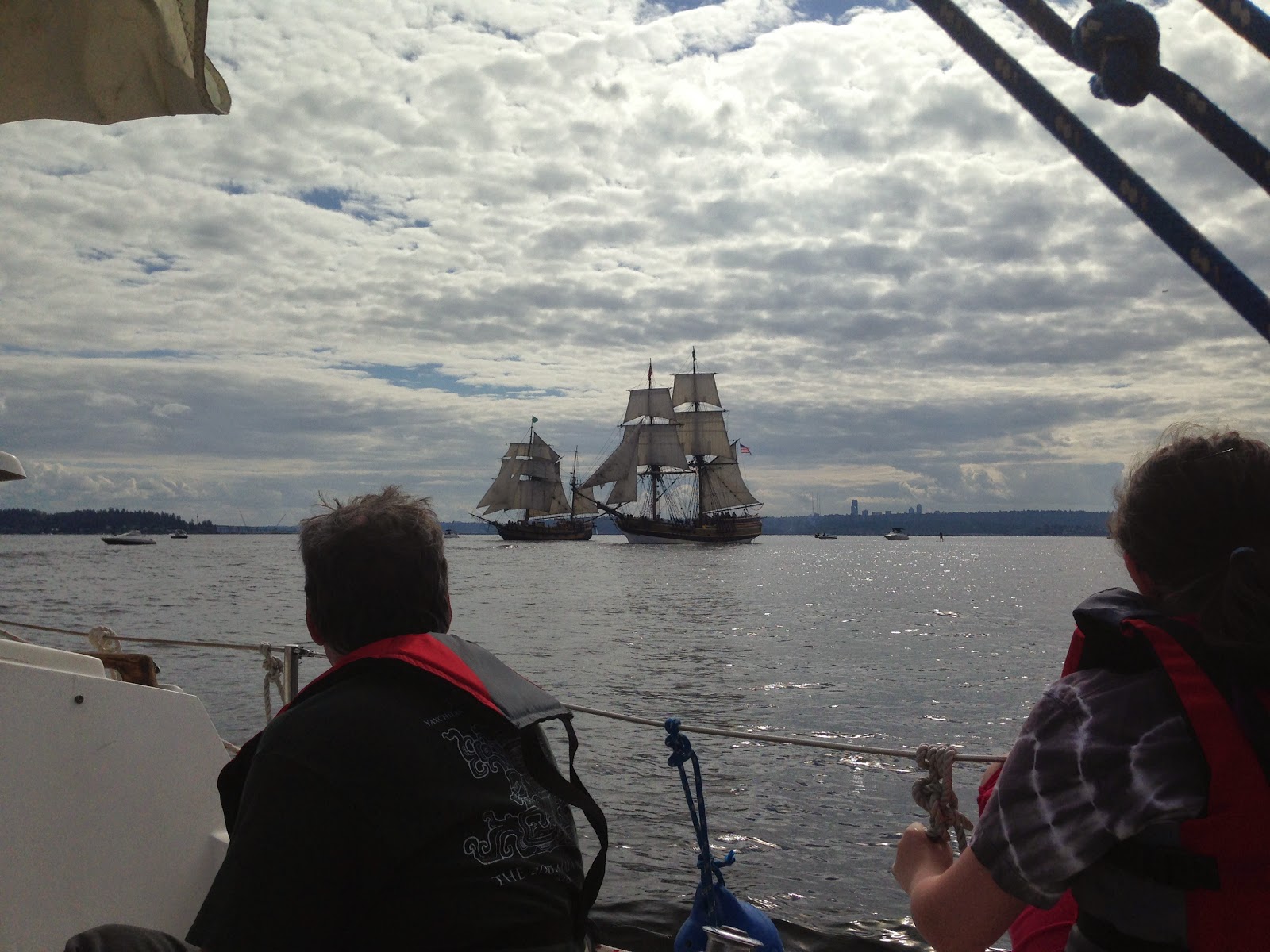
|
| Our nifty Forespar spinnaker pole. 8' x 2". |
We have been continuing to rig Fantasia, preparing to raise the spinnaker for the first time. The one piece of the puzzle that we were still missing was the ring necessary to attach the spinnaker pole to the mast. Today we took care of that piece. We mounted the spinnaker pole track and ring to the mast.
We ordered the parts from Catalina Direct. It came with a 47" x 1" track, two end caps, the car with the ring on it, 15 machine screws, a drill bit, and a tapping tool. If you knew exactly what you needed, you could probably save a few bucks getting all of this separately, but the advantage of ordering the kit is that you know everything is going to work. You will have the right sized drill bit and tapping tool, and the right kinds of screws, as well as the right quality of track.
No instructions came with the kit. However, we followed the nice article from the Fleet 20 newsletter, Installing a Spinnaker Pole Track on the Mast, by Dale Mack, which worked perfectly. We are going to describe our experience, but highly recommend reading that article.
We measured up and located the center of the track at 42" off the deck on our old-style Catalina 22. We marked the bottom of the track on the mast and carefully drilled the bottom hole. The tapping tool then puts threads in the hole that leads into the mast. The article shows a nice handle on the tapping tool, but we did not have one, and did not want to go get one. We found that a small pair of vice grips worked. We then screwed the bottom of the track to the mast.

|
| Track on the front of the mast with the spinnaker ring car. |
It really helped to have two people. One held the track to the mast, and handed parts and tools to the person doing the drilling and tapping. The boat was at the dock, but there was fairly heavy seas, and quite a few power boat wakes, so it would have been pretty easy for a part or tool to go into the water. We almost lost the tapping tool once, even with two people, which would have finished the day. If you can do this with the boat out of the water, it is a little easier.
Then the top hole was drilled, tapped, and screwed. Then we proceeded to drill, tap, and screw the other holes. We then put the car on the track. The track came with two end-caps, but we could not figure out how they fit. They seemed a hair small. We just left them off.
We then could attach our Forespar spinnaker pole to the ring to test it. We have an extra halyard line that runs to the top of the mast that we are using for the topping lift. When the mast is down next, we will mount a separate topping lift line, but for now this works just fine.
We clipped the snapshackles the topping lift and the downhaul to the spinnaker pole. The pole lifted nicely and the downhaul controlled it.
All together, it took about two hours to do the whole job.






























